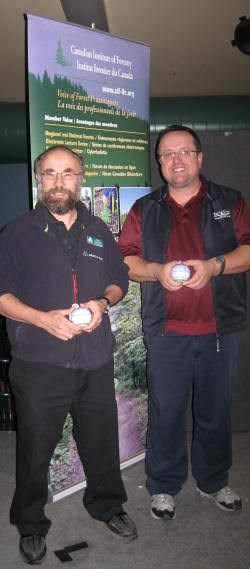In the strictest definition of the word, whenever there are two or more trees growing together, there you have a forest.
So says John Clement.
Clement is a professor at Sault College in the natural environment and outdoor studies program.
He's a councillor for the central Ontario section of the Canadian Institute of Forestry (CIF).
Clement and John Pineau, (both shown) executive director of CIF, was telling about 60 Sault College students and CIF members this past week about the Forests Without Borders program.
They also passed out clean air tree kits.
The kits contain seeds, instructions and everything one needs to start a tree.
Each kit has a unique PIN code and instructions on how to go online and register the location and time that the tree was planted.
The idea is that, once a tree is planted and logged, the World Clean Air Forest Initiative will will plant a partner to that tree in a developing nation.
That way those trees, in effect, become a forest that spans the globe, said Clement.
And that forest helps to clean the air.
The purposes of the CIF's Forests without Borders initiative is to help people reduce poverty, restore ecosystems and to increase understanding of sustainable development of forest resources, says the official website.
The program was launched in June 2009 and was brought to area CIF members and Sault College on Thursday so they could each have a clean air tree kit and get involved too.
The balls are each labelled, Clean Air Tree Kit and the instructions on the outside are to open, plant and grow clean air.
Of course Clement and Pineau are not recommending the seedlings be started before spring, but they'll keep just fine over winter in their balls, Clement said.
At time of writing, the Clean Air Forest Initiative had locked away 122,000 tonnes of carbon so far.
